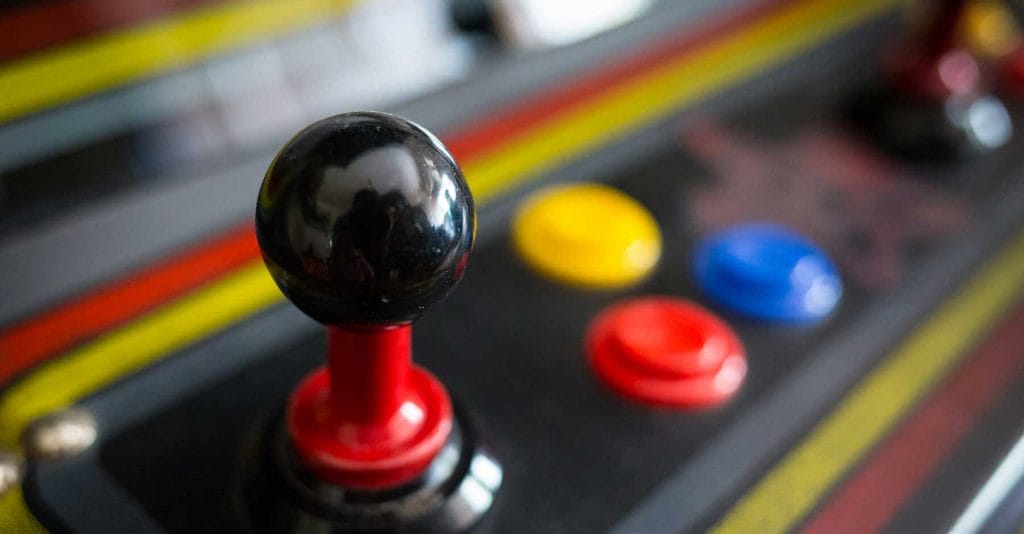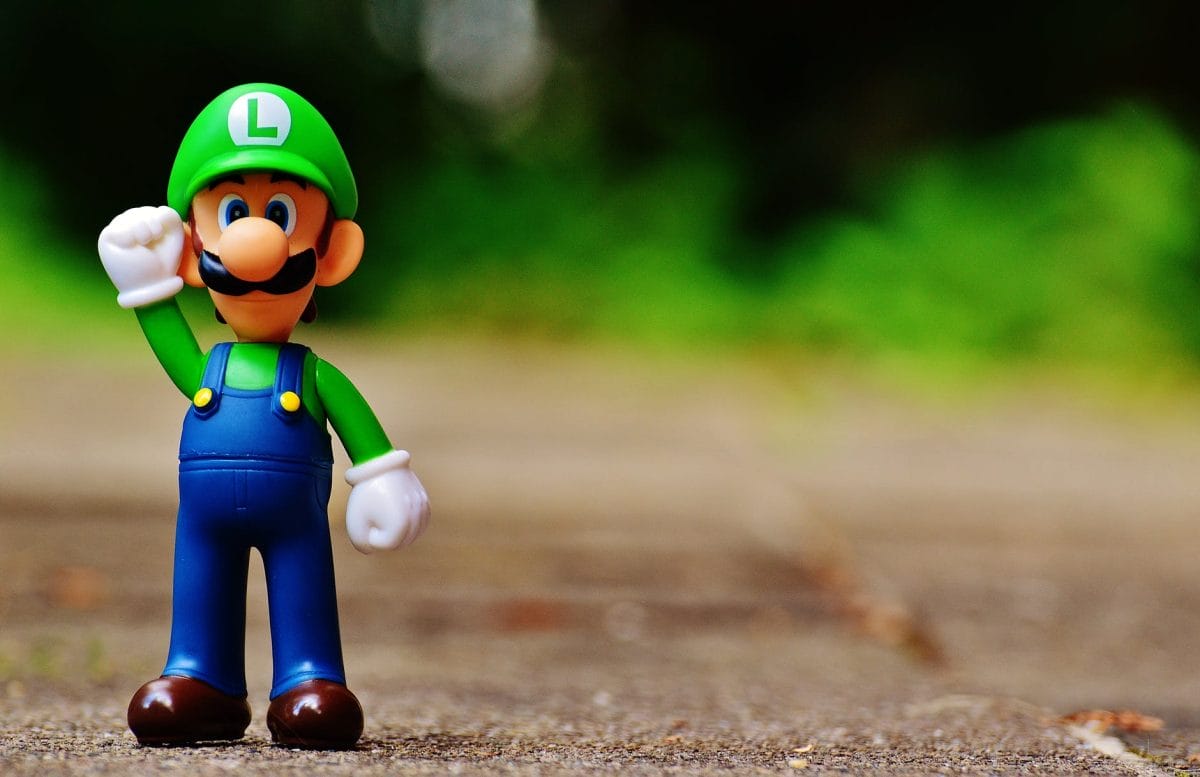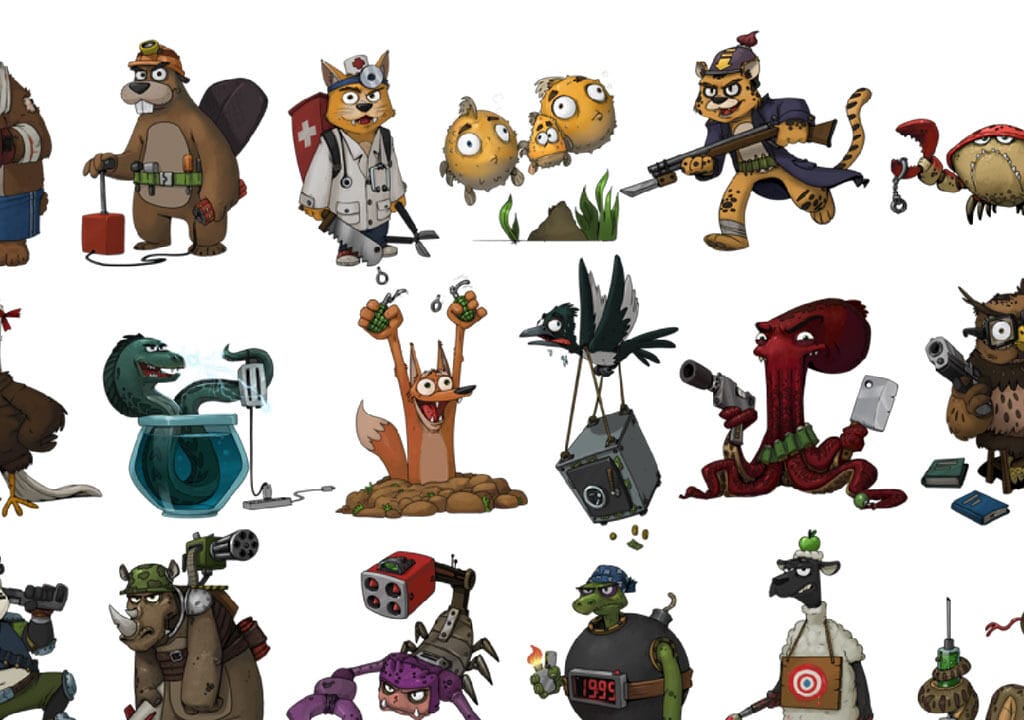So that makes you a game developer. First of all, congratulations! Game design and development is a wonderful opportunity for creative self-expression, and you should be proud of it. It’s a lot of work, but you decided to give it a try. That’s great.
Use these game design tips that we have consolidated for you as tips as a useful guide on your journey into game design. These concepts they explore will help you understand some of the key elements in game design.
You don’t need to follow all of their advice on your first project, but these tips will become more valuable as your work grows.

When you think about games, you will usually think of gameplay and game design one being the bases for the other. Most people also think that both of them are easy to do and achieve, and that it just comes about having good ideas and that’s it, but today we’re focusing on the more obscure and challenging secrets of game design, often overlooked, but if correctly used will be the key to creating unique games that people want to play.
- Game Design Tips Overview
- 1. Alignment with Game Hook
- 2. Keep the controls intuitive
- 3 – Wow Factor
- 4 – The size of the characters.
- 5. The game worlds
- Getting inspiration from other places
- 6. Excessive focus on fun as to reach a gameplay utopia.
- 7. Familiarity
- So how do you create a unique yet familiar game?
- 8. Game Balance
- 9. Did you hear that? The importance of sound and music for your came
- 10. Design for the player not for you
- Conclusion
Game Design Tips Overview
- Alignment with game hook
- Keep the controls intuitive
- Wow Factor
- The size of characters
- The game world
- Excessive focus on fun as to reach a gameplay utopia.
- Familiarity
- Balance
- Did you hear that? The importance of sound and music for your came
- Design for the player not for you
Let’s dive in enhancing the view about these clear success objectives for games.
1. Alignment with Game Hook
We have already looked into the concept of game hook and understood that it is all the elements of the game that can make it unique and singular, and able to bring the attention of potential players, over other games.
It can be a story, a character, a mechanic or the beauty of the game. Hooks are the elements that make the game attractive to players. It is what grabs the player’s attention or the “hook” that keeps them in the game.
When you start creating your game design, you should always be working totally aligned with the game hooks that you have defined, as to guarantee a consistency of both. If you and your team fail to do so, then the game will have some gaps between what you were somewhat promising or communicating to the players and what we will actually deliver. This could eventually generate some frustration into the player and generate a negative movement towards your game that would eventually make it harder to be successful.
2. Keep the controls intuitive
The game’s control system is related to the user experience and affects how efficiently and easily the player can learn the game. The control system also determines the player’s progression through the game. Therefore, making the game controller and keyboard/mouse functions as comfortable and easy to learn as possible is no small feat.
If you want to learn more about setting up controls (and as a bonus, animations) for your 2D project, we have placed below a very interesting video from CouchFerret‘s; for a tutorial on creating responsive controls.
Also, read the Gamesradar article “The Most Ridiculously Complex Controls in Gaming” for a fun explanation of some of the too weird controls.

Gamesradar article
"The Most Ridiculously Complex Controls in Gaming"
3 – Wow Factor
Surprise, excitement, amazement or how we call it the WOW Factor are elements rarely discussed in games, yet they are essential to the long-term success of any game as to avoid it to become boring. The reasons for this lies deep in the inner working of the brain and how it reacts to things that are not changing and not representing something that challenges its capacities.
It is also the secret to turning new players into lifelong game fans. Surprising and inspiring players can create an emotional connection with the game. Creating this connection is key to making great and successful games.
Your objective should be for players to get hooked on your game and keep coming back for more. Without this emotional connection, players will quickly get bored of the game, stop playing, and eventually delete the game to make space for others more refreshing games.
This results in zero replay value and retention, and zero profit. (And get you a bad name as a game developer).
Challenges + Emotion + reward.
But when emotion and rewards are added to the mix, you get a memorable and interactive experience. Players will want to continue to discover and surpass their previous scores to see what rewards and special bonuses await them. The element of surprise and wonder is key to keeping player interest. This game design approach to gameplay, characters, level design and even the user interface can be used to create an emotional experience.
As games are interactive media, it is very easy to elicit an emotional response from the user. The combination of sound effects, music, character expressions, text, movement and colours can emotionally engage the player and keep them engaged in the game. Consider how you can develop these elements with the theme and art style of the game in mind. For example, you can add interesting sound effects or background music to match the pace, mood or theme of the game. If it’s a racing game, adding a fast, adrenaline-pumping beat will resonate with players. If it’s a spooky platformer, you’ll want spooky background music and eerie sound effects when you find objects or when platforms fall. In this way, adding surprise and excitement to a game requires a lot of fine-tuned ingenuity.
Surprise in game design
Characters are another powerful element. Using characters can do a lot of things. Characters can add emotional depth to a game and act as an effective reward system. During the game design process, a number of unlockable characters can be added, with animations, effects and unique facial expressions that match the theme of the game.
Rewards can surprise and impress, but also strengthen the emotional connection with the player. Unlockable characters and unlockables can be used to create a highly satisfying reward system.
Coins, points and praise (a kind of underused reward) can also be effective. Praise can be given in text or voice when a stage is completed or a bonus item is found.
Animations and cutscenes can also be used to celebrate the completion of a level or as a prelude to a fun new challenge.
Wonders through power-ups
Hidden and power-up elements can make the game amazing ( or absolutely destroy it). Hidden game elements ( portals, areas, powerups, etc= also add significant replay value to the game. Players will enjoy exploring new areas and new game amps, new power ups and orbs, as well exploring new, and unseen worlds. It’s a fascinating and fun surprise that will immediately increase the positive perception of the player about your game.
Nintendo games excels at using the power-ups to surprise and impress with its gameplay. A good example is the mushroom power-up in Super Mario World, where by eating a mushroom, the player will be transformed into a low level Mario character. You can also get extra points.
Creativity is important in game design. Make your game fun with features that attract players.

4 – The size of the characters.
Size should not be overlooked in game design. Character size is not always the same as the size of the character.
A common mistake is to make characters too big. Game characters should be well proportioned. Do not make them larger than necessary. If the characters are too large, it not only gives the impression that the game is unfinished and unprofessional, but also distracts from the real experience of the game.
It is important to achieve this early in the game design process.
A good way to determine if a character is too big is to compare it to classic games such as Mario. All you need to do is import all the screenshots of the game into image editing software such as Photoshop or Illustrator and compare them with other popular games.
Mario is a classic and a great benchmark. You can also compare it to popular games of different genres. If you notice any differences, simply resize and save again.
You can read a good view on it in this Kongregate’s article Design Tips for In-Game Character Proportions

5. The game worlds
One of the secrets of game design is to create universal laws in your game that are always applying to the overall aesthetics of the game.
The look and play of your game is greatly influenced by these universal laws. For example, all buttons should have the same color. Particle effects are similar for similar objects. This consistency makes the game less complicated and more natural. Try to maintain the same style and appropriate themes throughout the game.
The goal is to make your game as consistent and cohesive as possible and avoid overusing multiple color combinations or wild texture.
You should always pick an art style and stick to it as if your lifes would depend on it.
Ask yourself the following questions: ” What colours and combinations best suit my main characters and my theme?”
Take the time to research different colour schemes, consider the possibilities and plan everything out.
Getting inspiration from other places
You can also look online for inspiration for your game design – check out Google images for interesting game world references.
You should always keep a folder with all the references that you should be using for your game world ( and game characters or other game references needed to build a consistent game).
You can create pinterest boards also to keep their your references and interact with potential players what they like the most.
6. Excessive focus on fun as to reach a gameplay utopia.
Making games fun is something that can have two meanings totally different, and that could have very different impact on our game and the expectations that we could have for it.
The point here is that there are many kinds of “fun” in games. Fun can be experienced through an immersive story and memorable characters, but it can also be linked to interaction with the game. Fun can be created using a design style that evokes an emotional response or engages the player.
In the video above, Jonas Tyroller shows how simples modification can make a game more fun.
You can also find a deeper explanation of these concepts in a very interesting article from iD Tech’s article on what makes video games fun.

Video games are fun. Here’s why, and how they hook us.
7. Familiarity
Familiarity is another important aspect of game design. Aside from being a unique game, it is also important that the game be familiar to players. Most of the most successful games are based on basic mechanics that have been popular for some time. Most of games in the last years, were not the first in their genre, but they used common approaches that the players can resonate to and feel confortable.
Familiarity is one of the secrets of game design because it makes the game easier to master as the player is not starting from zero. If designed in this way, anyone can start playing the game right away, without any special training and without suffering the frustration of the learning curve. It is important to design games that are easy to understand and control but hard to master. Games nowadays can’t afford to be too complicated and to be abandoned by the players.
Aim for a game that is unique, yet familiar to players.
So how do you create a unique yet familiar game?
The best way to do this is to use the “Research, Inspire & Improve” method. This is the formula that has been in the industry almost from its beginnings.. There are three basic steps to this method. First is research: explore the game store and look at all the top games that are similar to the type of game you want to create. Take a not of all of them with what you like and what you don ‘t like of the game.
Next, In the research part, try to understand from all your opinions on the game, if some of them could affect the capacity of the game to perform well in the market by enjoying the game, or if in the opposite direction. Analyze the games to figure out what parts of each game work well and what parts don’t. Download and play all the games and take notes. Write down everything you notice about the game. Pay specially close attention to the different elements of the game, from user interface, characters, backgrounds, and gameplay to sound effects, through other business related elements as ad placement, monetization techniques, and much more.
The third step is to think of new possibilities you and your team could have to improve the game concept based on all the previous analysis findings. This could include ( and not limited to) additions, replacements, deletions, or all three.
Think about what features or elements could be added or replaced to make the game better. Consider what different improvements or changes could be made in all areas of the game. Keep brainstorming until you have an entirely new game concept that is unique yet approachable.
We like to call this last step as arithmetic of ideas. As ideas can be added, multiplied, rested, divided a lot of operators that have to be taken in account when designing the game.

Playstation Classic Mini Console
Playstation Classic Console with 20 Classic Playstation Games Pre-Installed
8. Game Balance
Although a lot of people think on the creative of game design, in our hand of the work, we actually think that, although a creative work, it is more related with controlling everything that comes into the game design document, from graphics elements, to level of mana or magic that has been assigned to the game..
Nothing is more painful than feeling crippled or disadvantaged while playing. Weapons that don’t do consistent and adequate damage, levels that are visually distracting, and enemy AI that can’t be tamed are all evidence of game imbalance.
Gameplay balance is one of the biggest challenges for game designers, and for good reason. What may be unbalanced in one game may have exactly the desired effect in another project, depending on the type of game being created. Perhaps the best way to test the balance of a game is to have others play it and get feedback. Game balance could be been as countability of all the elements that will apppear in the game.
The ultimate secret to game design is finding the perfect balance of difficulty, challenge, and fun. All great games achieve this perfect balance, or what we might call the “Zen Balance” element. Super Mario Bros., The Legend of Zelda, and Sonic the Hedgehog are good examples of this.
Think of the game balance in game design on a scale. One is a boring, easy game; the other is extremely difficult to beat. The goal is to design a game that falls somewhere in between. If you can do that, you can create the perfect balance of excitement that will keep players engaged for a long time.
New game makers often tend to be biased to one side or the other. They either make the game too easy or too difficult. Neither is fun for the player. You don’t want to design a game that is too easy and you will quickly get bored, or too difficult and you won’t have fun playing it.
Unfortunately, it is easy to make this mistake, especially if you are the only one testing the game. The problem many creators have is that they know their game so well that when they try to test it themselves, it is difficult for them to accurately judge the difficulty of the game. This is why testing by beta testers is so important. It is the only way to determine where your game falls on the “zen balance” scale. Always test your game with more than one person to ensure that the difficulty level of your game is appropriate.
Remember to surprise and inspire people to become emotionally involved in the game. Keep the size of the characters to a minimum and try to make the game world as cohesive as possible. Your game concept should be both approachable and unique. And always test your game rigorously to find the best game balance for your game.
9. Did you hear that? The importance of sound and music for your came
Most of the times, music and sound are only noticed when they are not there, or if they are included, in such an awful way, that you have to note it.
Whether you’re making a hypercasual game or a fully immersive AAA game, the right sounds at the right time with right music for the right mood are a very important part of the gaming experience. Sounds and music can even serve as implicit guidance to the player, help them navigate through levels or give them clues about the outcome of their actions.
Most importantly, sound and music design sets the mood and atmosphere of the game.
10. Design for the player not for you
One of the biggest problems that usually game designers have is that they are working for the game that they would like to play, and not the best games that the game’s potential audiencie would like to play.
While sometimes this way of proceeding can generate successful games ( although we could leverage on divergent opinions here), most of times when you are making the game that you would like to play, then the game could be going in the wrong direction directly from the beginning.
To avoid this, generate frequent builds of your game and organize some focus groups with people in your team, students, family or other set of representative players. Let them play your build, collect their opinion and try to act on improving the game design into the direction pointed by the focus group.
This will help you moving aways from the game that you want to so, versus the game that your players will want to be playing.
Conclusion
In conclusion, game design is a complex and constantly evolving process that takes time, effort, and testing to perfect and that should always take player feedback into account.
By following the tips provided in this article, you will be on your way to creating a successful game, but don’t be afraid to experiment and find what works best for you and learn how to create an enjoyable and engaging gaming experience for your players. The secret is to iterate frequently as to learn learned lessons and especially by interacting with your players. No game designer will be good if he has no experience in making games that were played by actual players.
Thanks for reading!
Don´t hesitate to leave your comments below as to help us create a vibrant community.




